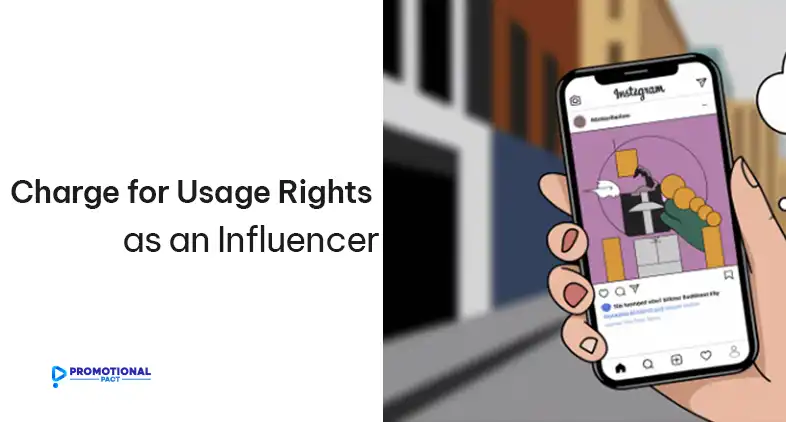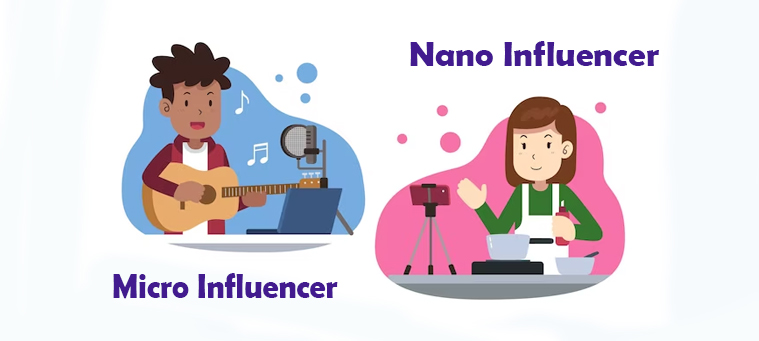
While crafting engaging content is already a significant investment of time and creativity, allowing brands to repurpose your work adds another layer of value that should not go uncompensated. Understanding and pricing your usage rights is not just about earning more; it’s about valuing your intellectual property and protecting the influencer marketing ecosystem.
This article walks you through everything you need to know about influencer usage rights, including what they are, why they matter, how to calculate fees, and tips for negotiating with brands.
What Are Influencer Usage Rights
Usage rights are permissions granted to brands to use an influencer’s content for their marketing efforts. These permissions can extend to various channels, including the brand’s social media platforms, websites, email campaigns, and even offline advertising like brochures and billboards. When brands purchase usage rights, they are essentially buying the ability to repurpose your content for their own goals, separate from the original collaboration.
For instance, let’s say you’ve created a stunning Instagram reel showcasing a skincare product. If the brand wants to feature that reel in their paid Facebook ad campaign or embed it on their website’s homepage, they need to secure the appropriate usage rights from you. Without a proper agreement, the brand could face legal repercussions for unauthorized use of your copyrighted work.
Why Are Usage Rights Important for Influencers?
As the creator, you hold the copyright to your content. This ownership means you—not the brand—have the authority to decide how your work can be used. Charging for usage rights ensures you are fairly compensated for the extended value your content provides.
Failing to price and enforce usage rights can devalue your effort and creativity, potentially setting a precedent that harms the influencer marketing industry as a whole. Moreover, brands benefit greatly from influencer-generated content, as it often resonates more authentically with audiences compared to traditional advertisements. By charging for usage rights, you’re recognizing the added value your work brings to their marketing campaigns.
Benefits for Brands
For brands, securing usage rights offers significant advantages. Influencer content tends to feel genuine and relatable, making it more impactful with target audiences. Additionally, brands can maximize their return on investment by repurposing influencer content across multiple channels, saving on production costs while extending the lifespan of the campaign. This makes the practice of acquiring usage rights mutually beneficial for both influencers and brands.
What Influences Usage Rights Pricing
Platform
Different platforms have varying norms and expectations when it comes to pricing. For instance, YouTube and Instagram typically command higher rates due to their larger audiences and the significant production effort often required for content on these platforms. On the other hand, platforms like TikTok, Facebook, and Twitter may have slightly lower pricing standards, but they still offer immense value depending on the brand’s objectives.
Follower Count and Engagement Rate
The size and responsiveness of your audience play a crucial role in determining your usage rights fees. A higher follower count and an impressive engagement rate—measured by likes, comments, and shares—increase the perceived value of your content. Engagement often signals a dedicated and responsive audience, which can justify charging a premium.
Type of Usage
- Organic Usage Rights: This typically includes reposting your content on a brand’s social media channels without paid promotion. Some influencers offer this for free for a limited period, while others charge a nominal fee.
- Paid Usage Rights: These allow brands to use your content for advertising campaigns on platforms like Instagram, Facebook, or YouTube. Since the brand is leveraging your work to drive revenue, these rights usually command a significantly higher fee.
- Exclusivity Clauses: If a brand requires exclusivity—restricting you from working with competing brands within a specific time frame—the usage rights’ value increases. Exclusivity fees are often calculated as a percentage of your base rate.
- Whitelisting: This involves granting a brand permission to run ads directly from your account. Whitelisting provides brands with greater control over targeting and ad optimization, but it also carries risks for influencers, such as reputational implications. Therefore, whitelisting should come with a substantial premium.
Content Creation Effort and Production Costs
High-quality videos with professional editing, special effects, or location shoots require significantly more effort and resources than simple photos or casual videos. The complexity and production value of your content should directly influence the fees for usage rights.
How to Determine Usage Rights Rates
Calculating a Base Rate
A common starting point for calculating a base rate is by using a formula tied to your follower count. For instance, many influencers use a baseline rate of $100 per 10,000 followers for a single Instagram post or TikTok video. However, this should be adjusted based on factors like engagement rate, niche expertise, and the quality of the content.
Calculating Usage Rights Fees
Usage rights fees are often calculated as a percentage of your base rate. Here are some examples:
| Type of Usage | Duration | Percentage of Base Rate |
| Organic Social Usage | 3 months | 20% per month |
| Paid Advertising Usage | 1 month | 50% |
| Website Usage | 6 months | 30% per month |
For instance, if your base rate for an Instagram post is $1,000, and a brand wants to use the content for paid advertising for one month, you could charge $500 for usage rights (50% of $1,000). Offering package deals for multiple types of usage or extended durations can also make your pricing more attractive to brands.
Negotiating Usage Rights with Brands
Be Clear and Professional
When discussing usage rights, it’s essential to communicate your fees and terms upfront. Be transparent about how you’ve arrived at your pricing and why it’s justified. Providing examples of industry standards can strengthen your position.
Leverage Industry Standards
Research and benchmark your pricing against similar influencers in your niche. This not only helps you stay competitive but also demonstrates your understanding of the market.
Use Written Agreements
Always formalize your terms in a written contract. Clearly outline the scope of usage, duration, platforms, and exclusivity clauses. A detailed agreement protects both parties and minimizes the risk of misunderstandings.
Tips for Successfully Charging for Usage Rights
- Be Transparent and Professional: Always set clear expectations and provide detailed invoices.
- Value Your Work: Know your worth and resist undervaluing your content. Remember, fair pricing benefits the entire influencer community.
- Stay Updated on Industry Trends: Regularly monitor changes in influencer marketing to keep your pricing competitive and informed.
- Use Tools and Resources: Leverage pricing calculators and contract templates to streamline your process.
Common Mistakes to Avoid
- Underpricing Your Rights: Don’t sell yourself short. Proper pricing reflects the value of your work.
- Neglecting Contracts: Verbal agreements can lead to disputes; always use written contracts.
- Overlooking Exclusivity Clauses: Ensure you’re adequately compensated for exclusivity.
- Failing to Update Rates: Periodically review and adjust your pricing based on experience and market changes.
Wrap Up
Charging for usage rights is not just about earning more money; it’s about recognizing and protecting the value of your work. By understanding the nuances of usage rights, setting fair rates, and negotiating confidently, you can ensure that your creative efforts are appropriately rewarded. With proper agreements in place, you can foster long-term, mutually beneficial relationships with brands while maintaining your integrity and independence as a creator.

